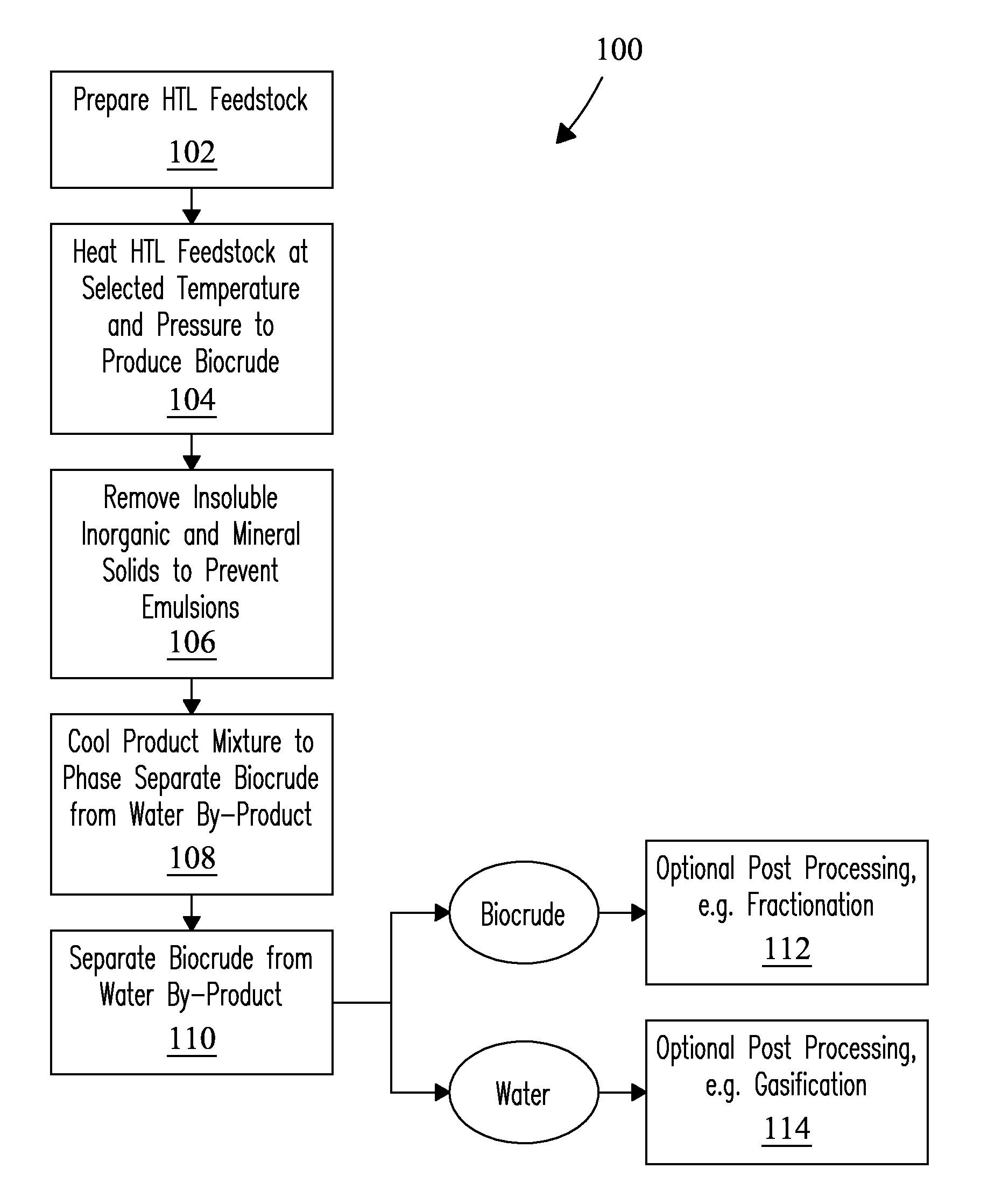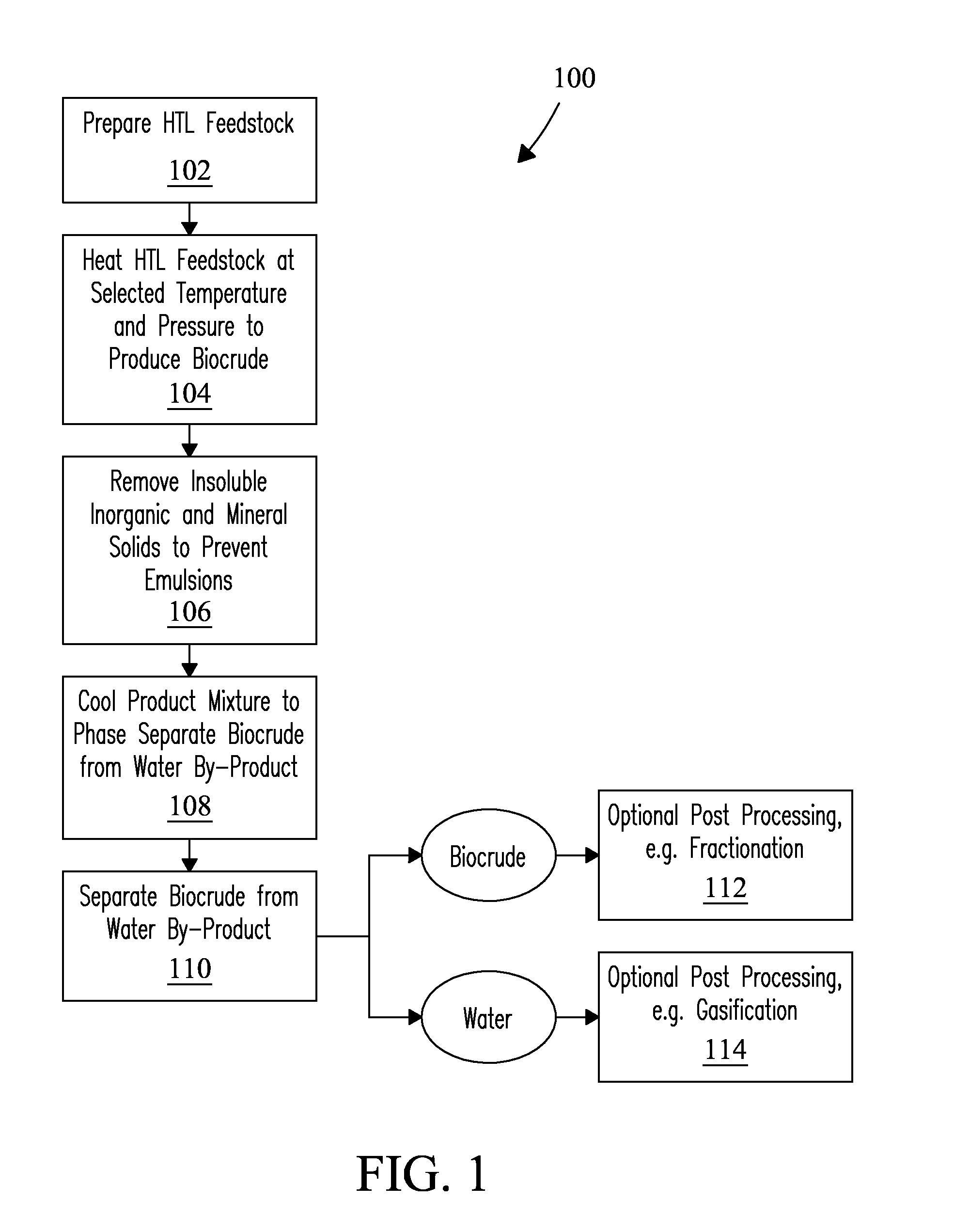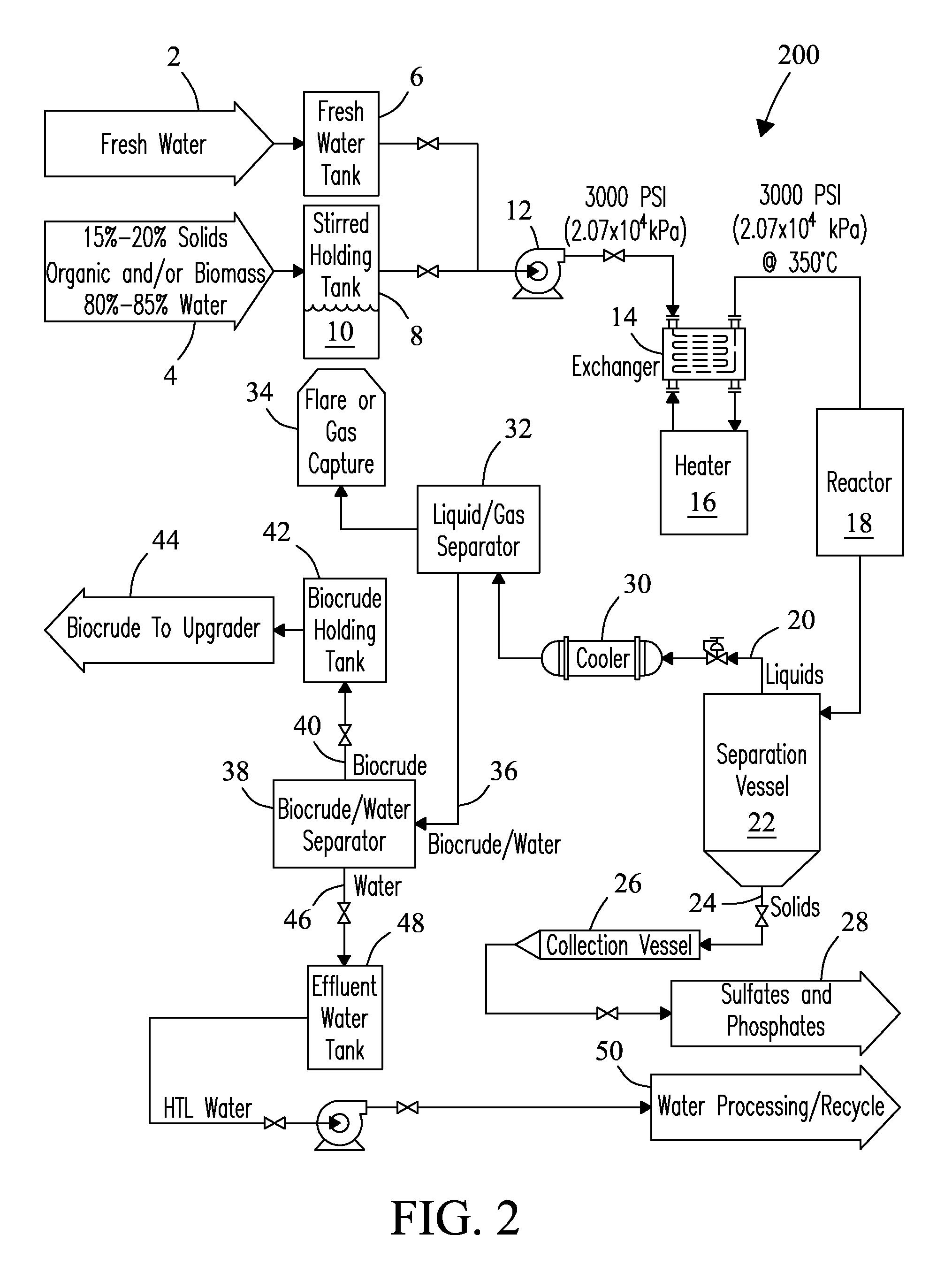System and process for efficient separation of biocrudes and water in a hydrothermal liquefaction system
a hydrothermal liquefaction and biocrude technology, applied in biofeedstock, chemical/physical/physicochemical stationary reactors, fatty-oils/fat refining, etc., can solve the problems of inefficient recovery of biocrudes in conventional htl, complex downstream processing of biocrudes and water by-products, and achieve the effect of efficient separation of biocrudes
- Summary
- Abstract
- Description
- Claims
- Application Information
AI Technical Summary
Benefits of technology
Problems solved by technology
Method used
Image
Examples
example 1
Hydrothermal Liquefaction of Food Processing Waste with Subsequent Catalytic Hydrothermal Gasification of Effluent Water
[0098]Waste material from a food processing factory may be collected and macerated to form a slurry containing approximately 25% solids (dry basis) in water. The slurry may be pumped to a pressure of about 207 bar (2.07×104 kPa) by a high-pressure slurry pump, and then sent to a heat exchanger. The heat exchanger may be configured to recover heat from the output stream. A hot-oil heater (e.g., fired by natural gas) may be used to provide finishing heat. In some embodiments, output temperature of the slurry may be about 350° C. The hot pressurized slurry may be flowed to a reactor such as a continuous stirred-tank reactor (CSTR) or a tubular (e.g., plug-flow) reactor. In some embodiments, feedstock slurry may be mixed continuously in the liquefaction reactor for a time of approximately 30 minutes. Organic materials including lipids, proteins, and carbohydrates may b...
PUM
| Property | Measurement | Unit |
|---|---|---|
| pressure | aaaaa | aaaaa |
| pressure | aaaaa | aaaaa |
| pressure | aaaaa | aaaaa |
Abstract
Description
Claims
Application Information
 Login to View More
Login to View More - R&D
- Intellectual Property
- Life Sciences
- Materials
- Tech Scout
- Unparalleled Data Quality
- Higher Quality Content
- 60% Fewer Hallucinations
Browse by: Latest US Patents, China's latest patents, Technical Efficacy Thesaurus, Application Domain, Technology Topic, Popular Technical Reports.
© 2025 PatSnap. All rights reserved.Legal|Privacy policy|Modern Slavery Act Transparency Statement|Sitemap|About US| Contact US: help@patsnap.com



